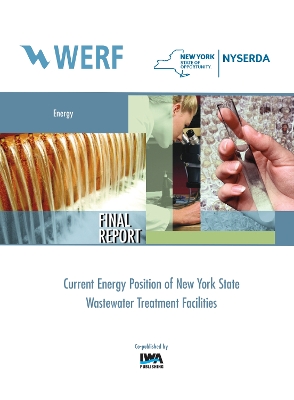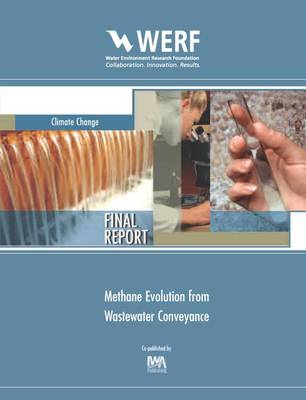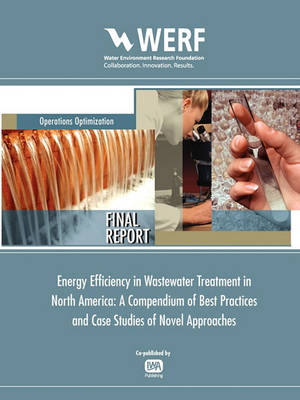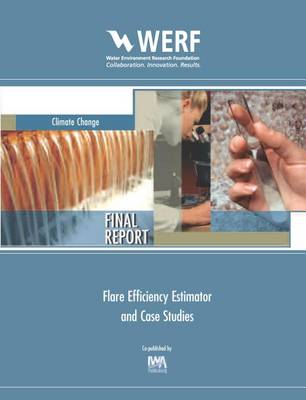WERF Research Report
10 total works
Overview of State Energy Reduction Programs and Guidelines for the Wastewater Sector
by Joseph Cantwell
The primary goal of the Optimization Challenge is to develop approaches that allow the wastewater sector to attain a 20% or greater reduction in energy to achieve treatment goals. One of the goals of the Operations Optimization Challenge is to identify the approaches used by the most effective power utility or state energy efficiency programs. Using these most effective elements of these programs build upon success and promote energy efficiency at the facility by putting in place the framework for effective energy management at a higher level. Currently only four states have effective energy reduction programs with a long-term history of performance. This report is aimed at increasing the number of states or other agencies (interstate agencies as well as power providers) who can implement successful programs to assist the wastewater sector reduce nationwide energy demand.
In support of this goal, this report:
- Provides suggested language for incorporating energy efficiency related concepts in design guidelines or standards.
- Evaluates the feasibility of establishing a national design standard for wastewater treatment facilities which incorporates energy efficiency related concepts in an outlined model standard. This includes results from a technical working session of selected wastewater regulatory and energy regulatory agencies that was focused on the issue of incorporating energy guidelines in their respective standards.
- Identifies reviews and analyzes successful state and utility sponsored wastewater-related energy programs and suggests a model framework based on the key elements of these programs.
Energy Efficiency in Value Engineering
by Joseph Cantwell and George V. Crawford
Value engineering is a technique that wastewater treatment facilities (WWTFs) currently use, when required, to analyze cost reduction and performance optimization opportunities. The research explores the potential to address energy efficiency during value engineering analyses of WWTFs. The research identifies the Society of American Value Engineers (SAVE) International as the primary value engineering standards and certification organization and shows the six-step SAVE process for conducting value engineering analyses. A survey of WWTFs identifies four WWTFs that conduct value engineering analyses using the SAVE process. Then, the research reviews the analyses to determine their effectiveness in addressing process energy efficiency opportunities. While the SAVE value engineering process does not require identification of energy efficiency opportunities, the analyses conducted by the WWTFs do identify such opportunities.
Based on survey results, WWTFs only conduct value engineering analyses when required, primarily because of the cost and time commitment. The research presents barriers to conducting value engineering analyses and discusses possible mitigation pathways. Pathways include (1) steps the State Revolving Fund can take, (2) development of a national value engineering standard that regulatory agencies can incorporate into wastewater system design requirements, and (3) development of WWTF-oriented energy efficiency training materials to add to SAVE's value engineer certification training.
ENER7C13
Identification of Barriers to Energy Efficiency and Solutions to Promote These Practices
by John Willis, Nancy Andrews, Lori Stone, Joseph Cantwell, and Rob Greenwood
The project identified the following key barriers:
* Capital projects. Economic barriers dominate: inadequate financial feasibility, lack of funding, and resource competition with other organizational priorities.
* Operations optimization. Operational conservatism (desire for a margin of safety for permit compliance) is the strongest barrier to implementing operating changes that conserve energy.
* Maintenance for energy efficiency. Many utilities have not optimized maintenance intervals for energy efficiency because they prioritize more pressing maintenance activities.
The barriers considered by this research include both internal and external challenges. Internal challenges are mitigated by well-developed energy programs, as gauged by the level of implementation of the approaches outlined in the WEF Energy Roadmap. Utilities with well-developed programs perceive barriers as being lower. External challenges are reduced for water resource recovery facilities (WRRFs) in states with well-funded and accessible energy incentive programs and less-inhibitive energy policies.
OWSO4R07a
To evaluate the European Experience with energy reduction and best practices at wastewater treatment plants (WWTPs).
To evaluate the best practices employed at a European WWTP exhibiting significant energy reductions and energy management.
To develop a viable template for a mass and energy balance model to be used as the basis for a subscriber-accessible tool that will be developed later.
The project team considered European facilities that have a history of process optimization and could serve as examples of best practices for the industry. One of these is the Strass im Zillertal WWTP near Innsbruck, Austria, a municipal facility that provides for both nitrogen and phosphorus removal. A lengthy optimization process spanning more than a decade has enabled the Strass plant to attain the singular goal of producing more electricity on an annual basis than it consumes.
Factors specific to the plant contributed to the Strass WWTP's transformation into a net electricity producer, including the facility's need for only low level (5 meter static head) influent pumping. However, the bulk of the energy and process optimization resulted from a combination of national programs, concerted efforts by a highly-educated operations team, and an energy-conscious mindset. WERF and its subscribers can readily apply these success factors to North American facilities.
This study examined the context, drivers, and decisions behind the Strass WWTP enhancements toward energy self-sufficiency. These included:
Examining regional and national energy and resource conservation programs that target wastewater treatment facilities in Scandinavia, Holland, Germany, Switzerland, and Austria.
Assessing Energy Conservation manuals used to promote resource conservation in European WWTPs.
Defining metrics applicable to WWTP operations optimization.
Evaluating Strass WWTP performance, including interviews with the plant operations staff.
Formalizing and extending the approaches used by the Strass team to quantify and evaluate the sustainability of treatment plant operations, and developing an approach to adapt them to the North American reality.
Current Energy Position of New York State Wastewater Treatment Facilities
by Nancy Andrews, John Willis, and Diane Nascimento
This research assesses the magnitude of energy performance shifts over the past 10 years based on the net effect of efficiency gains, increased electrical production, and increased process equipment loads. In facilities larger than 75 mgd, an overall trend toward increased average electrical energy consumption was observed, with recent implementation of nutrient removal being the most significant factor in this trend. Small and medium-sized facilities (less than 75 mgd) appear to be slightly improving their energy performance based on analysis of biochemical oxygen demand (BOD)-normalized energy metrics (kilowatt-hours per pound of BOD). Water resource recovery facilities with more developed energy approaches in their organization were more likely to have completed capital projects, operational optimization, and building-related improvements to reduce energy use.
Methane (CH4) production from sewers is a suspected, yet relatively undocumented source of greenhouse gases (GHGs). The Intergovernmental Panel on Climate Change (IPCC) published the "2006 IPCC Guidelines for National Greenhouse Gas Inventories" which states that "In most developed countries and in high-income urban areas in other countries, sewers are usually closed and underground. Wastewater in closed underground sewers is not believed to be a significant source of CH4." CH4 is a greenhouse gas that has a global warming impact that is 21 times that of carbon dioxide (CO2) and as such is of heightened interest in GHG modeling and inventories.
The goal of the first phase of the investigation was to determine if CH4 could be detected in the wetwells and forebays of a sanitary wastewater collection system. During that initial phase, methane emissions were quantified from DeKalb County's 64 pumping stations. The results of this investigation documented that approximately 1,000 MT of carbon dioxide equivalents (CO2e) are emitted each year from CH4 evolution at pumping stations serving roughly half of DeKalb's residents, 350,000 citizens, while moving approximately 50 mgd of wastewater. While 940 MT CO2e/yr were quantified, significant sources of under reporting are thought to exist, potentially masking CH4 emissions estimated between 2 and 5 times greater than those quantified under Phase 1. One potential such source was thought to be manholes receiving force main discharges.
During Phase 2 of this project, continuous gaseous- and liquid-phase monitoring were conducted at the discharge of a 16-inch, 3.3-mile-long force main from the Honey Creek Pumping station. Liquid phase sampling during this phase showed that 8.87 kg of CH4 were emitted per day at the force main receiving manhole during the summer months. The continuous monitoring data was used to calibrate a process model developed by the University of Queensland to predict CH4 and hydrogen sulfide evolution by simulating a force main as a plug-flow, fixed-film reactor. The model was then used to simulate force main CH4 emissions over a calendar year using historical flow and monthly average temperatures. This effort calculated emissions of 52 MT of CO2e/year.
Energy Efficiency in Wastewater Treatment in North America
by George V. Crawford
Through its Optimization Challenge program, the Water Environment Research Foundation (WERF) is currently participating in the Global Water Research Coalition's (GWRC) project titled Energy Efficiency in the Water Industry: A Compendium of Best Practices and Case Studies. The objective of the GWRC project is to develop a Compendium of best practice (worldwide) in the energy-efficient design and operation of water industry assets. For this project, WERF is serving the role of North America wastewater practice coordinator. Through this assignment, WERF intends to define specific recommendations regarding: Incremental improvements in energy efficiency through optimization of existing assets and operations More substantial improvements in energy efficiency from the adoption of novel (but proven at full scale) technologies As part of the GWRC project, WERF has developed this report summarizing existing information on well-established energy optimization/energy recovery best practices, as well as documenting a series of case studies of novel (yet full-scale proven) technologies/practices in wastewater treatment in primarily North America.
Technology Roadmap for Sustainable Wastewater Treatment Plants in a Carbon-Constrained World
by George V. Crawford
In May 2009, the Water Environment Research Foundation (WERF) convened a work group of international experts in the wastewater sector to develop a Wastewater Treatment Technology Roadmap which will identify possible routes to sustainable wastewater treatment in a carbon-constrained world. The resultant Technology Roadmap report identifies pathways toward sustainable wastewater systems over the next few decades, including various approaches the sector could utilize over the 20-30 year planning horizon.
The Technology Roadmap describes the current status of wastewater technologies, projects future treatment quality requirements, identifies research needs, and summarizes ongoing activities to meet the perceived future objectives such as reducing the carbon footprint while achieving lower nutrient levels. Work group participants brainstormed possible technology concepts which can be reasonably expected to produce actionable results that can be implemented by interested wastewater utilities. The participants considered typical and atypical approaches to optimizing carbon and nutrient management at WWTPs. Typical approaches include the evaluation of process modeling opportunities and constraints, and incremental resource and carbon management optimization techniques. Atypical approaches will be even more important to the future of wastewater resource reclamation. As an additional outcome, several work group members suggested conceptual and sustainable "plant of the future" treatment systems not constrained by existing infrastructure. Participants discussed their "Plant of the Future" concepts which can be expected to generate opportunities and research needs related to energy sources within treatment plants, changing wastewater characteristics, decentralized treatment, increased nutrient recovery and management, and total water reuse.
Leveraging the past research work done at the University of Alberta's (UoA's) Flare Research Group, an emissions calculation method has been developed as part of this research project. This method has been converted into a stand-alone tool, the Flare Efficiency Estimator (FEE). FEE has flare gas composition and flaring conditions such as flare gas throughput, flare size, wind speed, gas temperature, ambient temperature, and atmospheric pressure input parameters. FEE can help estimate the combustion efficiency as well as fugitive GHG emissions from the digester gas and landfill gas flares. FEE was originally developed under this project (U2R08) and expanded further under the OWSO11C10 project to include the NOx emissions. The most current version of FEE uses the 100-year global warming potential (GWP) of CH4 as 25 CO2e (IPCC, 2007).
To demonstrate the use of the FEE to estimate fugitive GHG emissions, data from two wastewater treatment plants (WWTP), one from Georgia and another from Tennessee are presented as case studies. These case studies were developed using the first version of FEE and did not include NOx emissions estimate. For the Tennessee case study, gas flaring data for a 100-mgd capacity WWTP were analyzed. With an average digester gas flaring volume of nearly 203,000 ft3/day and 70% CH4 fraction, FEE estimated a flaring-efficiency of 95.5%. Which meant an estimated 834 MT CO2e/yr were emitted in the atmosphere due to flaring inefficiency. Using the 99% flaring-efficiency assumption per EPA AP-42, these estimates would have been underreported by approximately 649 MT CO2e/yr. Similarly, for the Georgia case study, gas flaring data and prevalent flaring conditions for an 80-mgd capacity plant were evaluated. With an average digester gas flaring volume of nearly 133,000 ft3/day and 65% CH4 fraction, FEE estimated a flaring-efficiency of 94.5% which meant an estimated 759 MT CO2e/yr were emitted in the atmosphere due to flaring inefficiency. Using the 99% flaring-efficiency assumption per EPA AP-42, these estimates would have been only 138 MT CO2e/yr, an underestimating of GHG emissions by approximately 621 MT CO2e/yr.
FEE is available online from this NYSERDA webpage: http://www.nyserda.ny.gov/en/Commercial-and-Industrial/Sectors/Municipal-Water-and-Wastewater-Facilities/Final-Reports-for-Water-and-Wastewater-Technology-and-Demonstration-Projects.aspx





